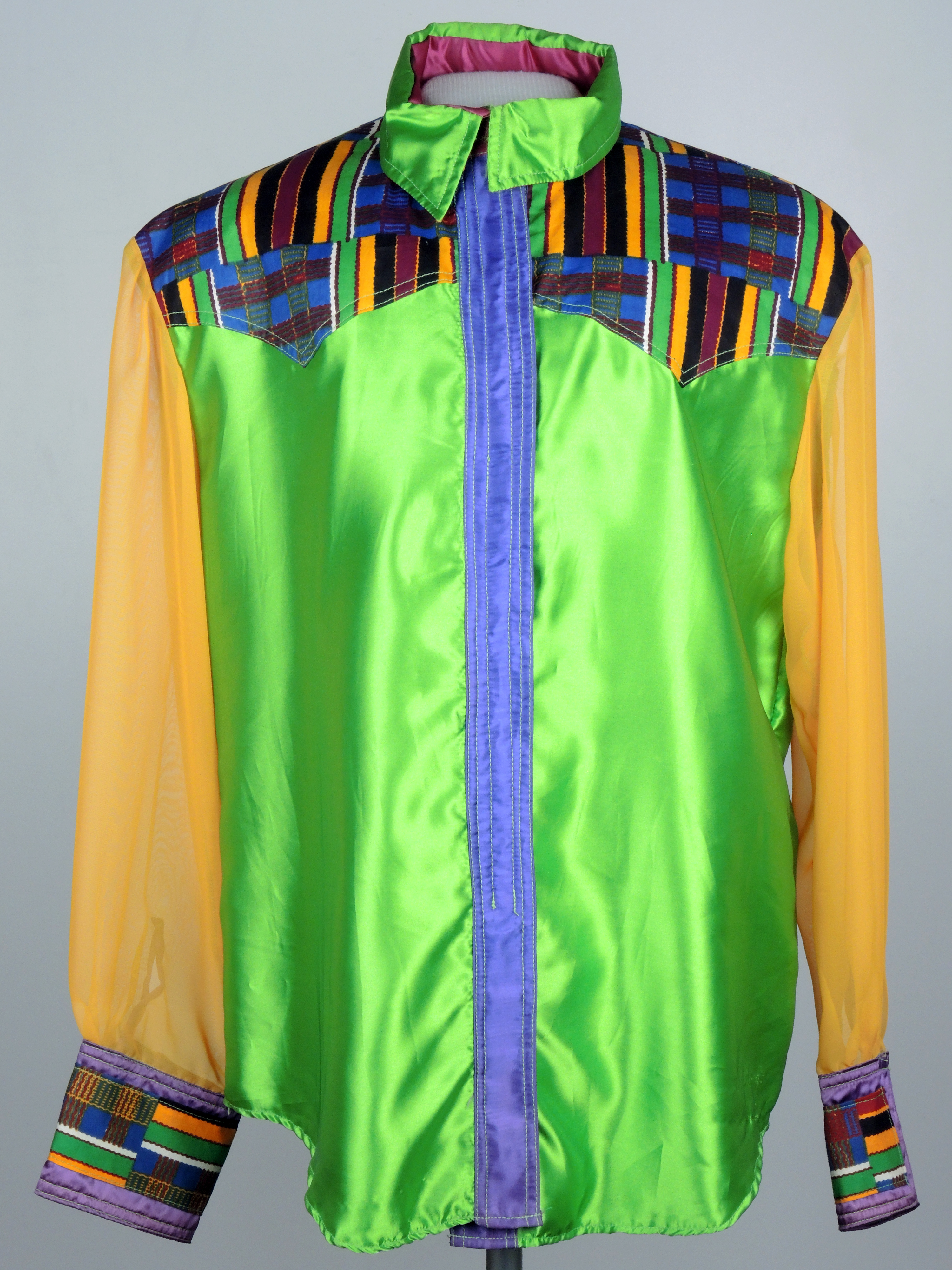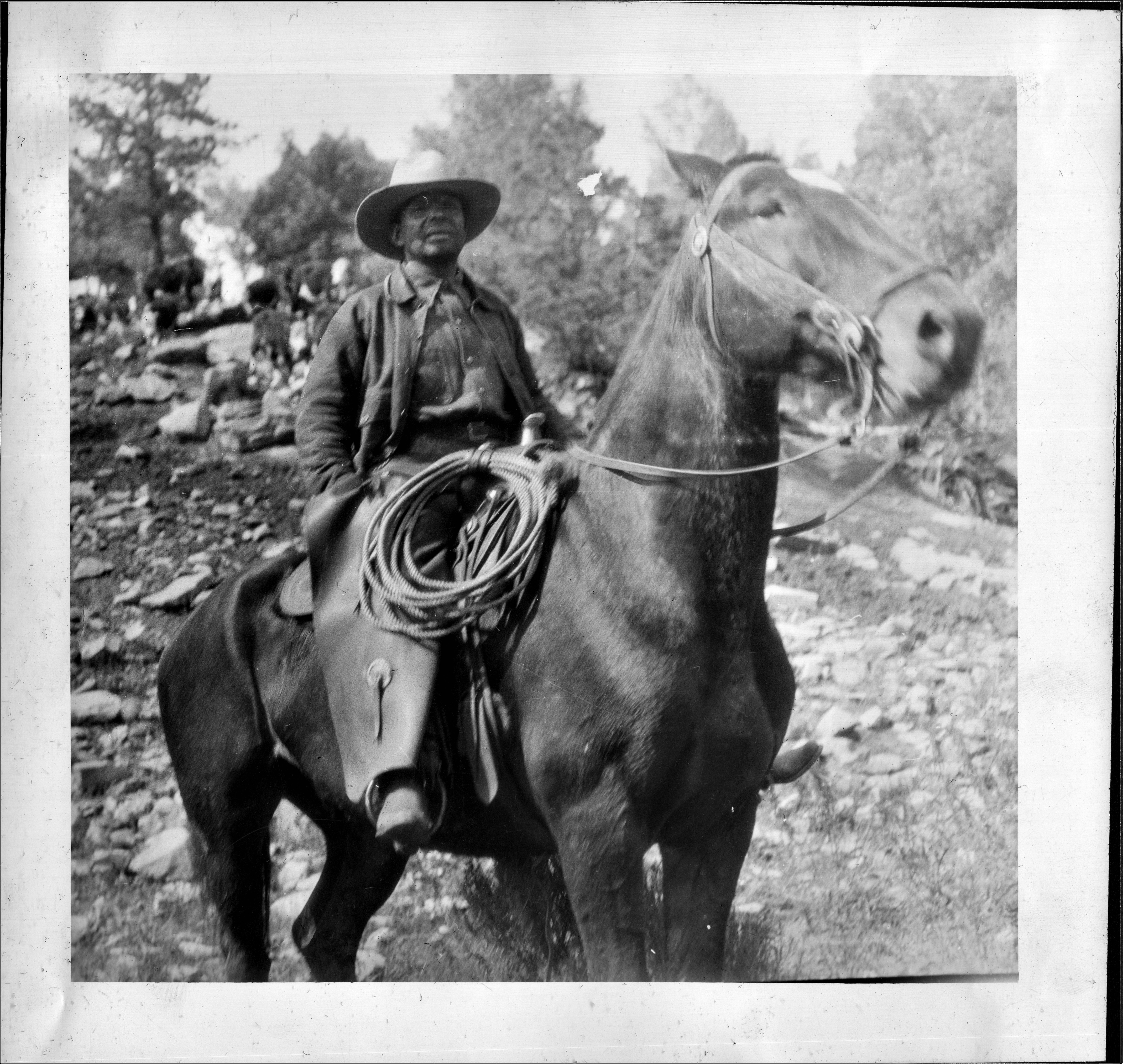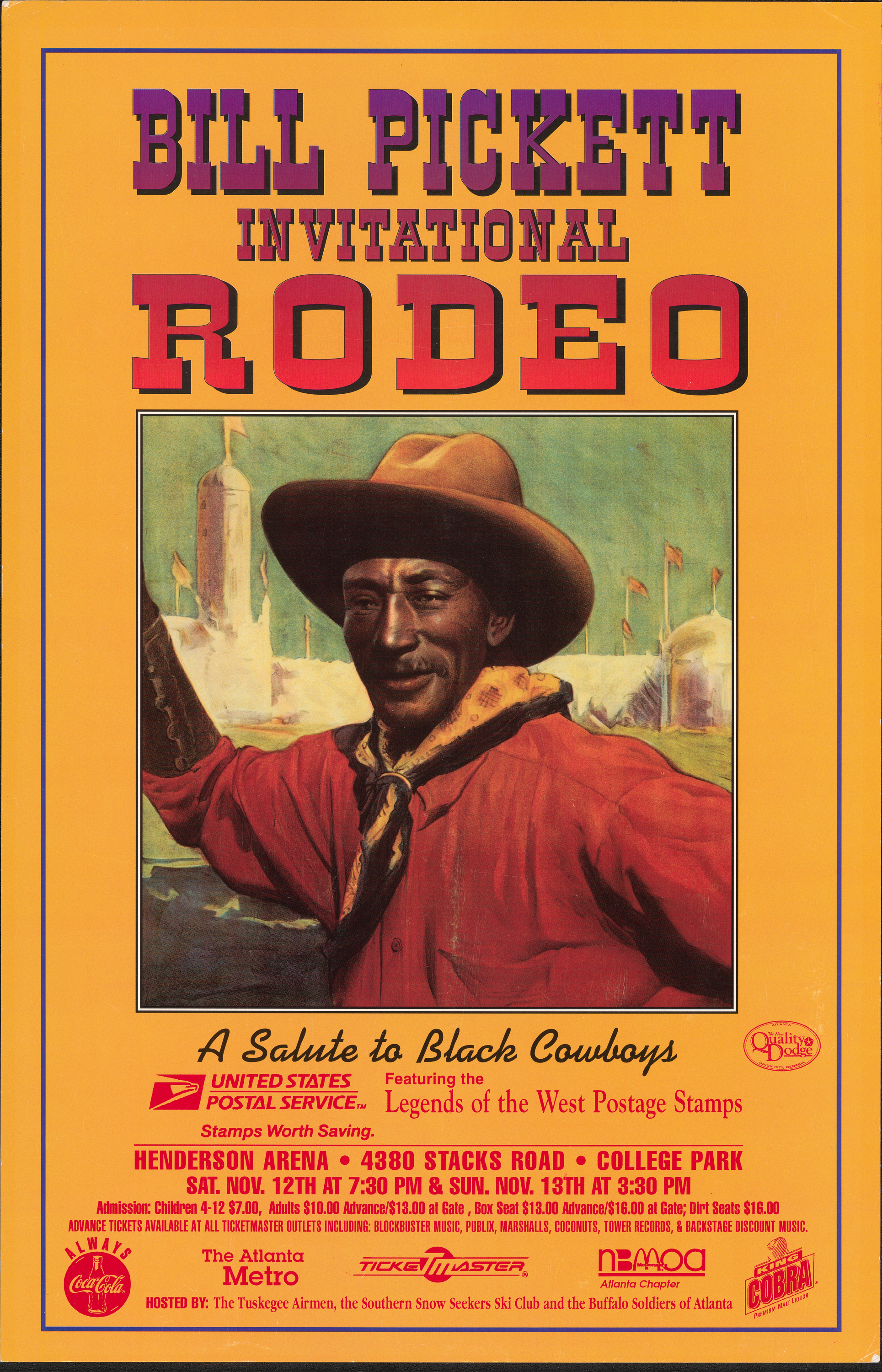
Story
Black Cowboys Unveiled
Popular culture has largely written Black cowboys out of the West. Evidence from History Colorado’s archives reminds us of their centrality to the story.
Just thinking about the Old West can evoke images of vast landscapes dotted with canyons, cacti, and critters, occasionally presided over by a kettle of vultures. The people within them, at least in most popular portrayals, are usually mounted on horseback, often chasing herds of cattle over open prairie. And they're as mythic as the landscapes they inhabit.
These archetypal cowboys came into popular imagination in mass media and entertainment in the nineteenth and early twentieth centuries. Dime novels, illustrations, paintings, and theatrical stage productions featured white European Americans. But these popular images obscured the true history of the American cowboy, one in which cowboys of color always played prominent parts in the diverse cultural tapestry of the American West.
Today, Black artists are working to recover and reclaim this history. Solange’s album, When I Get Home, Lil Nas X’s “Old Town Road,” and Beyonce’s Cowboy Carter album focus on Black cowboys in their lyrics and album covers. As I started thinking about these contemporary artists and their messages, I began wondering if any materials in the History Colorado Collection highlight the lineage of African Americans in the American West. What I found reveals that History Colorado has played a role in preserving this important history in its collections even as it has struggled to represent the shrouded legacy of Black cowboys in Colorado.
Black Cowboys Come West
Archival records show that slave traders specifically targeted African tribes familiar with cattle herding, like the Fulani of modern day Cameroon. Transported to the Americas, the enslaved persons with such expertise were assigned tasks like catching and tending wild cattle, or driving long trains of steers led by oxen. This knowledge became even more valuable in the West, as African Americans took on various occupations including ranch handing, wrangling, gold mining, farming, trapping, and more.
Following Emancipation and the Civil War, many African Americans ventured into territories that would later become Colorado. At least a quarter of cowboys in the late 1800s were Black, and alongside Native American and Mexican cowboys, were central in transforming the social, physical, and economic terrain. Laboring as a cowhand was definitely not an easy task, but it was more profitable than sharecropping, one of the only occupations for freedmen in the South. While instances of prejudice and racial violence were still common in western territories, the rules of racism and segregation weren’t as rigid here as they were in the South. Combined with demand for skilled labor, for many, the West represented a chance for a new life and economic prosperity unavailable elsewhere in the country.
One of the most famous Black cowboys, William “Bill” Pickett, was probably born on December 5, 1870 in Texas. Pickett left school in fifth grade to begin working as a ranch hand where he started riding horses and learning rodeo performance techniques. His natural talent earned him victories in numerous rodeo contests and national competitions. Today, he is remembered as the creator of the “bulldogging” technique. Also known as steer wrestling, bulldogging involves grabbing the stock by the horns to wrestle the animal to the ground—an event still popular in modern rodeos. Pickett went on to establish the Pickett Brothers Bronco Busters and Rough Riders alongside his four brothers. In the early 1900s, he performed in the popular Miller Brothers 101 Ranch Wild West Show, which also included famous cowboys like Buffalo Bill and Will Rogers. Some folklore even suggests he taught Rogers some of his most famous tricks. Pickett is credited as being the first Black cowboy star and later appeared in several motion pictures. Although Black cowboys like Pickett were involved in rodeos for decades, many had to endure the same hostile conditions on the road that greeted other Black performers.
Promoter Lu Vason decided to put Black cowboys front and center when he moved to Denver in 1977. Upon arrival he toured the Black American West Museum and discovered a trove of materials about African American cowboys, in addition to the outlaws, lawmen, soldiers, and ordinary citizens who were a vital part of the region’s history. He was inspired to create the longest-running Black touring rodeo, which he rightfully named the Bill Pickett Invitational Rodeo in Denver in 1984. This event alone drew thousands of African American fans to the sport, in tours that still crisscross the United States today. Some of the highlighted events that both cowgirls and cowboys participate in are bareback riding, bulldogging, calf roping, and ladies barrel racing. The season opener begins in Colorado in February and travels to Oakland, Los Angeles, Atlanta, and Washington DC, before ending in Fort Worth in September.
Black Cowboys in the Collection
With this history in mind, I began surveying the collection at History Colorado for items that illuminate the Black experience. Peeking down one of the stacks in storage, a brightly colored shirt flashed out to me. As I drew closer I was immediately struck by the traditional African kente cloth sewn around the cuffs and shoulders.

Women’s western wear shirt from the Bill Pickett Invitational Rodeo in 1994.
This cloth has grown out of various weaving traditions that came from West Africa dating back to the eleventh century. Weavers of this cloth are known by alternating colors in a warp (vertical) and weft (horizontal) fashion, where complex patterns are valued for both their visual effect and symbolism.
When I took a step back, I noticed how the colors and patterns danced in a rhythm across the cloth. Traditionally, the colors and patterns are used to symbolize a festive occasion, portray a story, or set of values. The cloth now has an evolved meaning to displaced Africans and their descendants around the world, for whom it symbolizes a unity with their ancestors and the African diaspora’s ongoing work to overcome discrimination and prejudice.
As I started researching the donation records, I learned that Lu Vason donated the shirt to History Colorado himself. It would have been worn by a cowgirl who performed at a rodeo during the national anthem, and other women at the rodeo would open the day's events by riding a horse throughout the arena carrying sponsor flags along with the Stars and Stripes.
Following the paper trail also revealed a publicity poster for the Bill Pickett Invitational Rodeo showing a colorful illustration of Pickett dressed in western wear in front of a towering arena. This eye-catching poster gives a nod to the history of Black cowboys with its playful artwork and storytelling. Posters like these are rare, highly valuable, and collectable. Fortunately, History Colorado was able to preserve this important piece of history.
The true history of the American cowboy has all too often been obscured and veiled from collective memory. But the material record tells a different story. Photos and artifacts in the History Colorado Collection are indelible reminders that Black people have not only always been part of western stories, but that in many ways, the story of the West is also the story of Black Americans.


